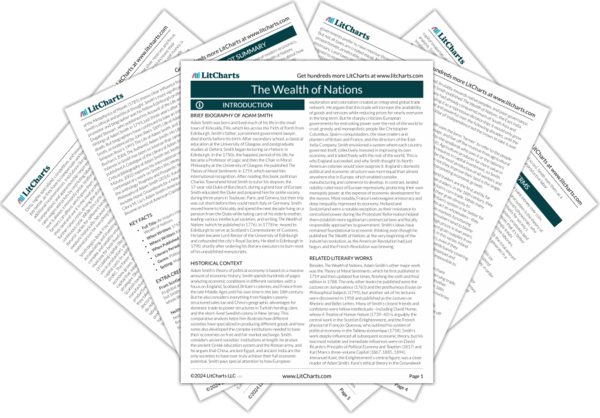Improved Land Quotes in The Wealth of Nations
Every fixed capital is both originally derived from, and requires to be continually supported by, a circulating capital. All useful machines and instruments of trade are originally derived from a circulating capital, which furnishes the materials of which they are made, and the maintenance of the workmen who make them. They require, too, a capital of the same kind to keep them in constant repair.
No fixed capital can yield any revenue but by means of a circulating capital. The most useful machines and instruments of trade will produce nothing, without the circulating capital, which affords the materials they are employed upon, and the maintenance of the workmen who employ them. Land, however improved, will yield no revenue without a circulating capital, which maintains the labourers who cultivate and collect its produce.
The inhabitants of the town, and those of the country, are mutually the servants of one another. The town is a continual fair or market, to which the inhabitants of the country resort, in order to exchange their rude for manufactured produce. It is this commerce which supplies the inhabitants of the town, both with the materials of their work, and the means of their subsistence. The quantity of the finished work which they sell to the inhabitants of the country, necessarily regulates the quantity of the materials and provisions which they buy. Neither their employment nor subsistence, therefore, can augment, but in proportion to the augmentation of the demand from the country for finished work; and this demand can augment only in proportion to the extension of improvement and cultivation.












